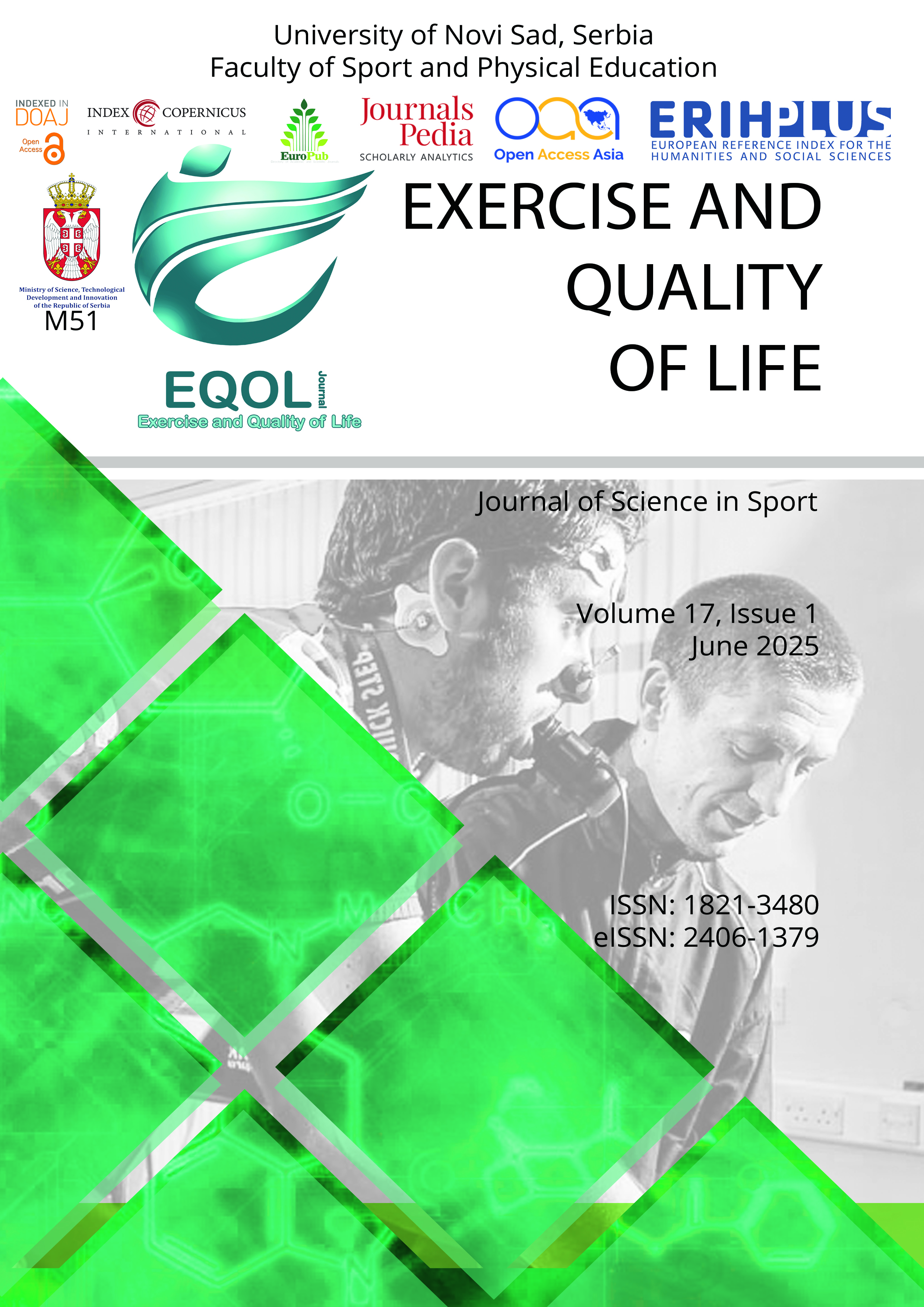Current issue

Volume 17, Issue 1, 2025
Online ISSN: 2406-1379
ISSN: 1821-3480
Volume 17 , Issue 1, (2025)
Published: 15.06.2025.
Open Access
All issues
Contents
15.06.2024.
Review scientific paper
Risk factors for shoulder injury in professional male handball players: A systematic review
Handball is a globally popular and physically demanding sport that requires high-intensity intermittent activities, with a particular emphasis on frequent ball throwing or shooting. The primary aim of this systematic review was to identify the risk factors for shoulder injuries in professional male handball players. The secondary aim is to propose preventive measures for reducing shoulder injuries in professional or elite handball players. This study followed the guidelines provided by the Preferred Reporting Items for Systematic Reviews and Meta-Analyses (PRISMA). Web of Science, PubMed, Science Direct, and Google Scholar were used to identify relevant studies. Only 8 studies met the eligibility requirements and were incorporated into the review. The Physiotherapy Evidence Database (PEDro) was assessed for the methodological quality of studies. Seven of the total eight studies were considered moderate quality, however, only one study was considered low quality. Based on this review findings, the following risk factors for shoulder injury are prominent among professional and elite male handball players. The primary factors for eventual shoulder injury are shoulder muscle imbalances, range of motion (ROM) discrepancies, glenohumeral internal rotation deficit (GIRD), and scapular dyskinesis. Also, in one study authors specified player position as a potential risk factor.
Damjan Jakšić, Stefan Maričić, Mila Vukadinović Jurišić, Marijana Čavala
16.12.2020.
Original scientific paper
Psychometric properties of a Serbian version of the State-Trait Anxiety Inventory X-2
Given that anxiety is a significant individual disposition that affects sports performance, this study aimed to verify the latent variables obtained by the State – Trait Anxiety Inventory X-2, and to compare the obtained factor solutions with the proposed model of latent variables. The second aim refers to the presentation of the results of the questionnaire State – Trait Anxiety Inventory X-2 answered by Serbian male and female handball players. The research was conducted on a sample of 170 respondents, 99 male and 71 female handball players, aged 14 to 39 years (average age = 21.9) with an average handball playing career of 9.39 years. Towards the end of 2019, the respondents filled in the above-mentioned questionnaire used to assess anxiety as a personality trait. Exploratory factor analysis with certain modifications of the algorithm was applied to determine accurately latent space. The overall analysis was performed using the R statistical package. Four factors were selected based on the conducted factor analysis of the latent space of the questionnaire. Ten, five, three and two items are projected on the first, second, third and fourth factor respectively. Since internal reliability of the fourth factor was 0.394 it was excluded from further consideration and interpretation. The achieved scores on four separate factors show that Serbian male and female handball players achieve average results on the first (Presence of Trait anxiety) and the third factor (Absence of proactivity), while they achieve scores above the average on the second factor (Positive affect). In order to examine the sex differences between the examined variables, a one-way analysis of variance was performed. The findings show that there is no statistically significant difference on all three factors between the scores achieved by male and female handball players. A statistically significant difference between handball players of different competitive ranks appeared only on the Positive affect factor between the top athletes and the athletes in the second league (p = .04).
Damjan Jakšić, Jovana Trbojević Jocić, Stefan Maričić, • Bülent Okan Miçooğulları























